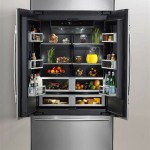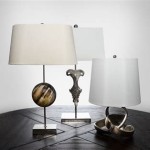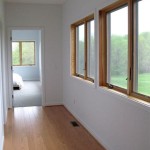What Is Mid-Century Modern Interior Design?
Mid-century modern design represents a defining aesthetic movement in interior design, architecture, product design, and graphic design that emerged in the middle of the 20th century. Spanning roughly from the mid-1930s to the mid-1960s, this era produced a distinct style characterized by clean lines, organic forms, and a focus on functionality. Mid-century modern interiors embrace simplicity and reject excessive ornamentation, prioritizing natural materials and a connection to the outdoors.
Key Characteristics of Mid-Century Modern Interiors
Several key characteristics define mid-century modern interiors. Understanding these elements helps in identifying and recreating the style. The emphasis is on creating a harmonious and livable space that combines form and function seamlessly.
One of the hallmarks of mid-century modern design is the use of clean, simple lines. Furniture pieces often feature geometric shapes and avoid elaborate detailing. This minimalist approach extends to the overall layout of the space, prioritizing open floor plans and a sense of spaciousness.
Furthermore, the movement embraced organic shapes and forms, drawing inspiration from nature. This is evident in the use of curved lines, biomorphic shapes, and natural materials such as wood and stone. The incorporation of these organic elements softens the geometric lines and adds a sense of warmth to the space.
Functionality remains a core principle of mid-century modern design. Every piece of furniture and decorative element serves a purpose. This focus on practicality stemmed from the post-war era's emphasis on efficiency and affordability. Multifunctional furniture, such as convertible sofas and storage ottomans, are common features.
Materials and Color Palettes
Mid-century modern interiors typically feature a specific range of materials and colors. The use of natural materials like wood, particularly teak, walnut, and oak, is prominent. These woods contribute to the warm and inviting atmosphere. Other natural materials such as stone, leather, and wool are frequently incorporated.
The color palettes used in mid-century modern design are diverse, ranging from neutral tones to bold accent colors. Common neutrals include beige, gray, and white, which serve as a backdrop for brighter hues. Popular accent colors often seen in this style include avocado green, mustard yellow, burnt orange, and teal. These colors add a touch of vibrancy and personality to the space.
Alongside natural materials, mid-century modern design also utilizes man-made materials such as plastic, fiberglass, and vinyl. These materials were considered innovative during the period and allowed for the creation of affordable and uniquely shaped furniture pieces. The use of these materials showcases the era's embrace of new technologies and materials.
Iconic Furniture and Decor
Mid-century modern design is characterized by iconic furniture pieces and decorative elements that have become highly sought-after collectibles. These pieces often feature innovative designs and high-quality craftsmanship.
The Eames Lounge Chair and Ottoman, designed by Charles and Ray Eames, exemplifies the mid-century modern aesthetic. Its molded plywood shell and leather upholstery embody the era's focus on comfort and organic forms. Similarly, the Noguchi coffee table, designed by Isamu Noguchi, features a sculptural base and a glass top, demonstrating the harmonious blend of natural materials and abstract shapes.
Other iconic pieces include the Arne Jacobsen Egg Chair, known for its distinctive shape and swivel base, and the George Nelson Bubble Lamps, which feature whimsical, globe-shaped shades made of plastic. These pieces represent the innovative use of materials and the playful spirit of mid-century modern design.
Decorative elements such as abstract art, geometric patterned textiles, and ceramic pottery often complement the furniture and add to the overall aesthetic. Large windows and minimal window treatments are common, allowing natural light to flood the space and further connect the interior with the exterior environment.
The Enduring Appeal of Mid-Century Modern
The enduring appeal of mid-century modern design lies in its timeless aesthetic and its focus on functionality. The clean lines and organic forms create a sense of harmony and balance, while the emphasis on practicality ensures that the spaces are both beautiful and livable. This blend of form and function makes mid-century modern a versatile style that continues to resonate with contemporary audiences.
The use of natural materials and the connection to the outdoors further contribute to the appeal of this design style. These elements create a warm and inviting atmosphere that promotes a sense of well-being. The flexibility in color palettes allows for personalization and adaptability to various tastes and preferences. From minimalist approaches to vibrant accents, mid-century modern can be tailored to suit a range of individual styles.

Mid Century Modern Interior Design What Is It And Stunning Examples

Mid Century Modern Design Defined How To Master It Décor Aid

45 Irresistibly Stylish Midcentury Modern Living Room Idea

45 Irresistibly Stylish Midcentury Modern Living Room Idea

Mid Century Interior Design 7 Tips For Creating A Timeless Modern Home Decorilla

What Is Mid Century Style In Interior Design Inspiration Books Blog

What Is Mid Century Modern The Furniture Rooms

Mid Century Modern Design Defined How To Master It Décor Aid

History Of Interior Design Mid Century Modern

Mid Century Modern Interior Design 20 Ways To Timeless Elegance








